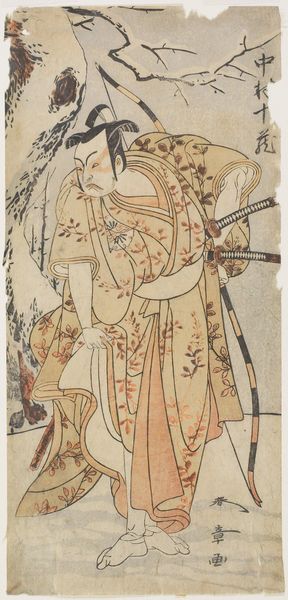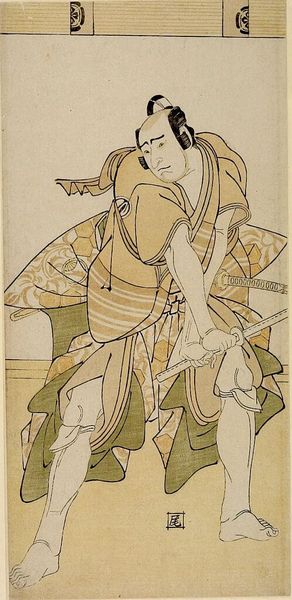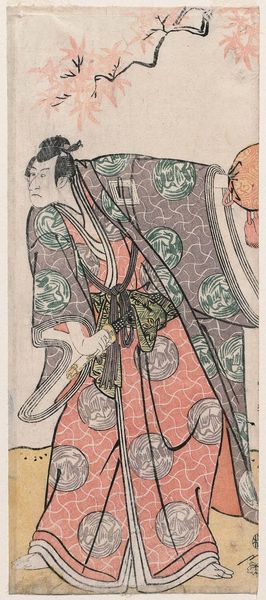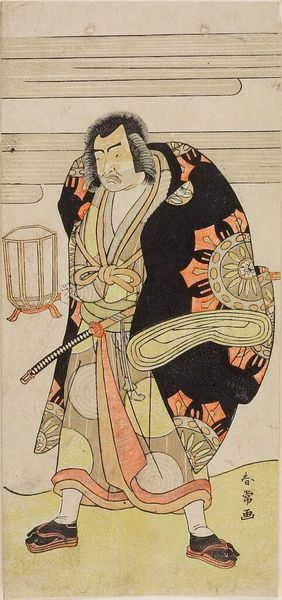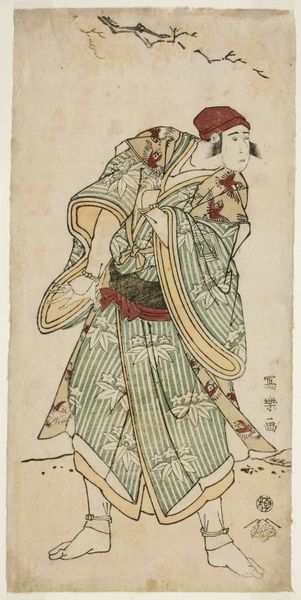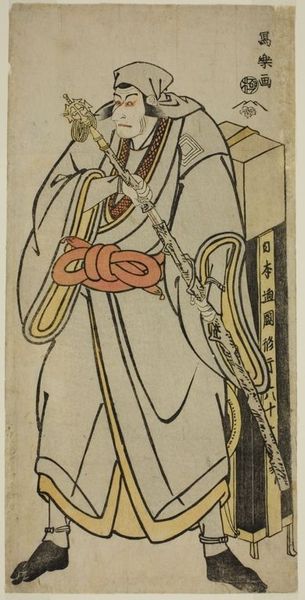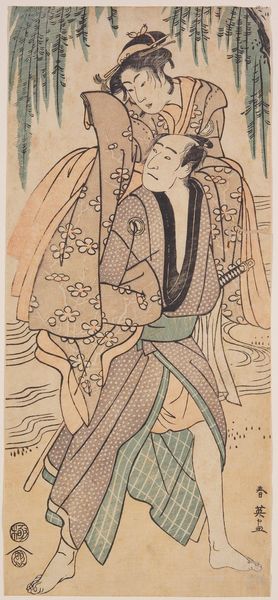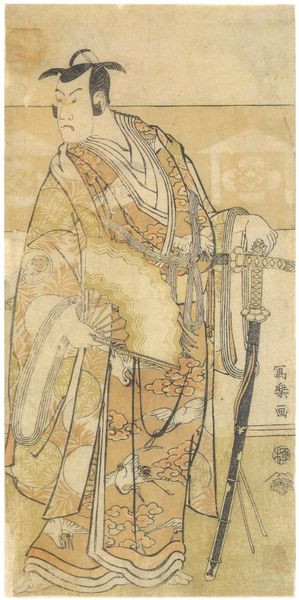
print, woodcut
#
portrait
#
ink drawing
#
narrative-art
# print
#
asian-art
#
ukiyo-e
#
woodcut
#
costume
#
sketchbook drawing
Copyright: Public domain
Editor: Here we have Tōshūsai Sharaku’s woodcut print from 1794, "Kabuki Actor Onoe Matsusuke I as the Lay Priest Yuasa Magoroku.” The figure's clothing, his sandals, and props tell us quite a bit. What do you see in this piece, focusing on what it might reveal about society at the time? Curator: Let's examine the materials used in this print. The woodblock technique itself speaks to a developed system of artisanal labor and mass production. Notice the meticulous carving, enabling multiple impressions for a growing urban audience. The paper, likely made from plant fibers, was also a key commodity. Editor: Interesting. So the print itself is a product of particular materials and skills. What about the figure's clothing, what can we discern from the image's contents themselves? Curator: Indeed, his attire! Note the patterning on the robe. The designs are not simply decorative, they represent a very controlled level of consumption and access to a particular status within that world. These signify social standing and would immediately communicate the role of the character portrayed. Also the swords: these elements combined elevate his status even though this Kabuki Actor plays the part of a Lay Priest, which are often more humble than represented here. Editor: It’s like reading a language of status and production isn’t it? The labor required to produce such elaborate garments! Curator: Precisely. And beyond the physical making, consider the distribution networks needed to disseminate these prints – bookshops, street vendors. They fed a burgeoning entertainment industry where fame, as portrayed through actors, became a commodity itself. Who bought these prints? Were these expensive commodities or mass produced memorabilia available to many? These details all play into its social role and status. Editor: So, more than just a portrait, it's a snapshot of a specific material culture at play. Thanks, this has been so illuminating, revealing a complex history behind the image's surface. Curator: My pleasure. By focusing on the materiality and the modes of production, we gain a richer understanding of its time.
Comments
No comments
Be the first to comment and join the conversation on the ultimate creative platform.
